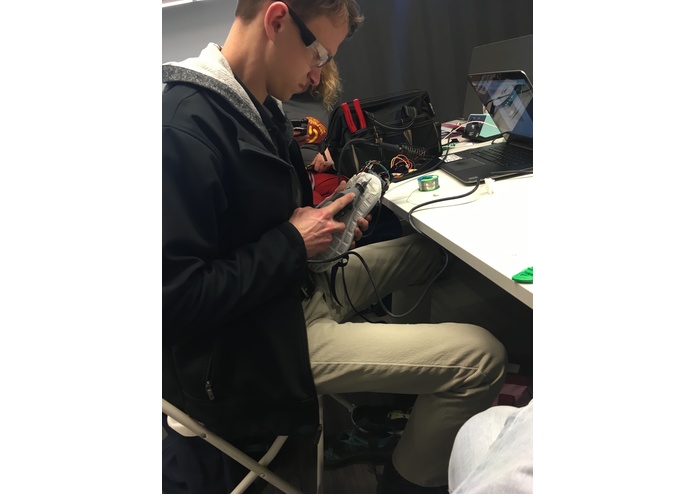Inspiration
We wanted to incorporate our passion for autonomous robotics with wireless communication, serving the niche for travelling assistance in an increasingly world.
What it does
Cargo robot that connects to a radio transmitter attached to the user (currently integrated in a shoe), using sensor data and programmed logic to follow the user in potentially any environment.
How we built it
We built it in multiple modules, separating the data receiver (robot communications), hardware control (robot outputs), and data transmission (shoe). After each was developed and tested individually, we began the long - and somewhat tedious - process of integration.
Challenges we ran into
The initial base processing system (Arduino 101) had built-in accelerometers and gyroscopic sensors, but no driver for our radio transceiver. When switching to a platform with driver support (Arduino Uno), we no longer had such sensors and thus had to make use of a much more limited array. After a poor circuitry connection, we had to design and build a hand-made motor driver to replace our recently Kentucky-fried circuitry.
Accomplishments that we're proud of
Establishing transceiver communication between a wearable sensor device (a shoe) and a mobile robotic platform (a cardboard box), both Arduino-powered. Organized approach to testing and debugging various prototype phases. Discovery/learning of algorithms to maximize information obtained from limited sensor input.
What we learned
We learned two significant lessons: how to ask more experienced individuals for assistance when we were stuck, and to check simple solutions before assuming complex problems (I got 99 problems and not rebooting is about 70 of them).
What's next for shoebotics
Integration of additional sensor data, including (but not limited to) accelerometers, GPS, and gyros. Construction of a more durable and marketable frame for extended use. Attachment of physical container for cargo and luggage transport.










Log in or sign up for Devpost to join the conversation.